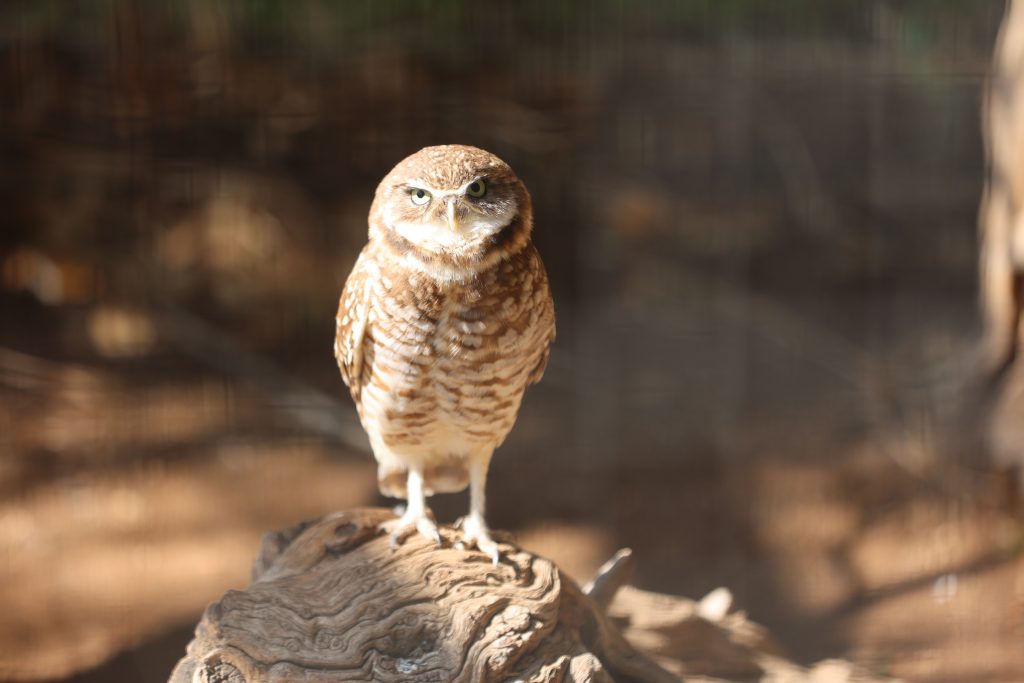Our hours for May 10, 2024: 9:00 AM-5:00 PM

The Burrowing Owl is a small, ground-dwelling bird that is native to North and South America. They are known for their unique behavior of nesting in burrows dug by other animals, such as prairie dogs or ground squirrels. These owls are active during the day and have a distinctive, bobbing gait as they move across the ground.
The Burrowing Owl is a small owl, with adults measuring around 7-10 inches tall and weighing about 6-8 ounces. They have a round head and a flattened face with bright yellow eyes. Their feathers are brown with white spots, and they have long, skinny legs. Unlike most other owls, the Burrowing Owl does not have feather tufts on its head.
Burrowing Owls are found in a variety of habitats, including grasslands, deserts, and agricultural fields. They prefer open areas with short vegetation, where they can easily see and catch their prey. Burrowing Owls are carnivorous and eat a variety of small animals, including insects, rodents, and reptiles.
Burrowing Owls are social animals and often live in groups. They are active during the day, which is unusual for owls, and are often seen perched on fence posts or other elevated objects. Burrowing Owls do not build their own nests but instead use burrows dug by other animals. They will often line the burrow with grasses and feathers.
Burrowing Owls are considered to be a species of conservation concern in some parts of their range. They are threatened by habitat loss and fragmentation, as well as by pesticides and other toxins. Many populations have also been impacted by urbanization and development.